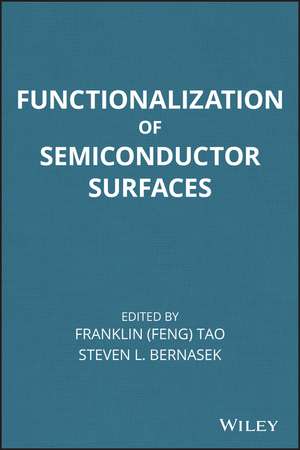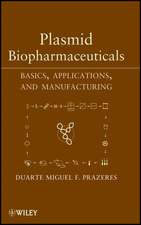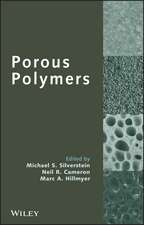Functionalization of Semiconductor Surfaces
Autor F Taoen Limba Engleză Hardback – 18 apr 2012
Preț: 983.85 lei
Preț vechi: 1081.15 lei
-9% Nou
188.28€ • 192.82$ • 156.62£
Carte tipărită la comandă
Livrare economică 18 martie-01 aprilie
Specificații
ISBN-10: 0470562943
Pagini: 454
Dimensiuni: 165 x 237 x 29 mm
Greutate: 0.74 kg
Editura: Wiley
Locul publicării:Hoboken, United States
Public țintă
Graduate students and undergraduate students in chemistry, materials science, or physics, scientists in physical chemistry, materials chemistry, nanoscience and nanotechnology, engineers in materials engineering, electronic engineering, and semiconductor sensing technologiesCuprins
Notă biografică
Textul de pe ultima copertă
Discover how an emerging field is leading to a new generation of enhanced semiconductors
Written by international leaders in the field, this book provides a complete and current review of the latest findings, practical applications, and active research in the organic functionalization of semiconductor surfaces. Readers will discover how the characteristics and properties of various organic functional groups when combined with inorganic semiconductor surfaces can lead to increasingly enhanced functional materials, including microchips and biosensors.
Functionalization of Semiconductor Surfaces addresses all the important research questions in the field, starting with the basics and then advancing to more complex functionalization chemistry. The text begins with an introduction to the field and a discussion of essential experimental methods. Next, it presents:
- Detailed descriptions of the structures of the relevant semiconductor surfaces
- Reviews of surface functionalization with progressively more complex organic functionalities
- Discussion of organic and biomaterial functionalization of semiconductor surfaces, including a chapter examining theoretical studies of these systems
- Both dry (vacuum) functionalization and wet chemical functionalization approaches
Clear illustrations of structures and mechanistic pathways enable readers to understand the underlying principles of organic functionalization of semiconductor surfaces and how these principles work in practice. Extensive bibliographies at the end of each chapter serve as a gateway to the field's growing body of literature.
This book is invaluable for chemists, engineers, and students who are involved in investigations of the surface chemistry of semiconductors and organic functionalization of semiconductor surfaces. Moreover, the book sets the foundation for the development of the next generation of microelectronic computing, micro- and optoelectronic devices, microelectromechanical machines, three-dimensional memory chips, silicon-based nano sensors, and nano-patterned biomaterials.











